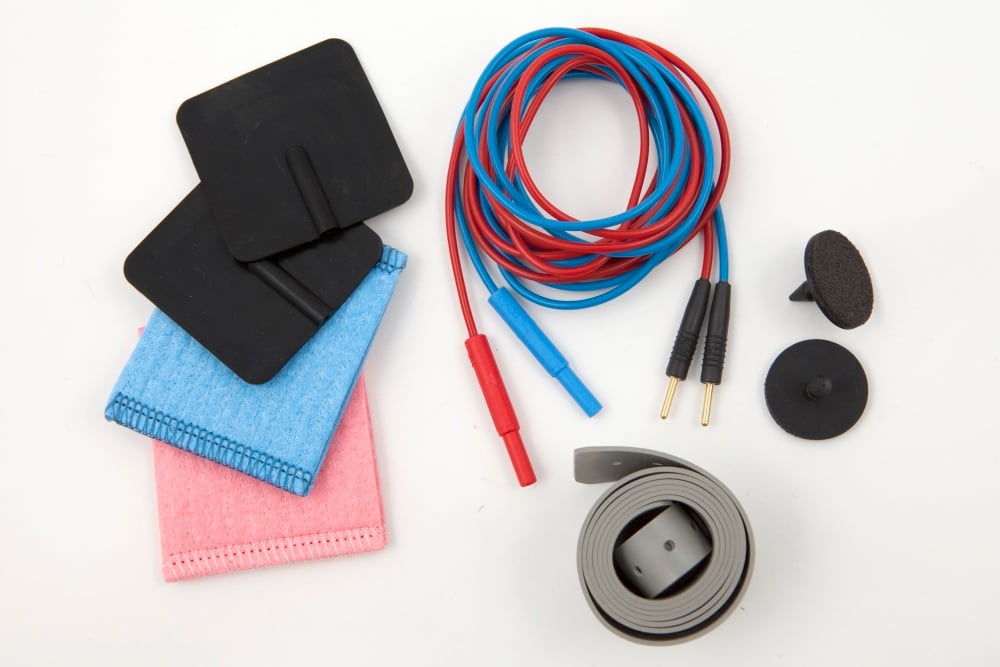neuroConn-LOOP-IT*


This hardware platform is perfect for realtime data acquisition, analysis, and the control of neuro-modulatory stimulation. It enables state-dependent and closed-loop controlled experiments, Temporal Interferance stimulation and neuromuscular stimulation - all simultaneously and synchronously and within one box.
LOOP-IT ensures minimized constant delays between data acquisition, analysis, event detection, and derived parameters for the output module (e. g., tES or FES current source, trigger of TMS).
Functioning as a multi-channel stimulator for 2 or 4 transcranial and/or peripheral stimulations, our current sources exhibit low noise, high temporal precision, and galvanic isolation. This setup is specifically designed for temporal interference stimulation as well as pairing transcranial and neuromuscular stimulation, providing a comprehensive solution for advanced neuroscience research.
Research Note: The platform is intended for use in a research context, and its applicability in other practical settings should be evaluated with caution.
Features
Galvanically isolated modules with different functionality:
- EEG / ECG / EMG biosignal acquisition (up to 1 ksps)
- tDCS / tACS / tRNS current sources (low 1/f noise, < 5 mApp, < 5 kHzbandwidth)
- neuromuscular electrical stimulation (NMES) (< 200 kHz, full scale rise time: 1 µs; high-power (+/- 40 mA) and high speed application up to 1 ms duration in constant current applications (+/- 15 mA)
- multichannel digital I/O (TMS, event-related potentials)
- sensor interface for non-electrical biosignals (e. g. movement, breathing, blood flow, temperature)
Based on a real-time data processing platform
- all modules run synchronized
- simultaneous read/write-access to all modules
- jitter-free data transceiving
- loop delay can be set down to 100 μs
Real-time system for physiological oscillations phase-dependent stimulation:
- state-dependent and closed-loop controlled experiments in a stable time regimen with 1 - 3 ms turn-around time:
- data acquisition of ExG (EEG, ECG, EMG), 3-axis acceleration 24 bit/1 kHz
- data analysis of amplitude, frequency, latency, phase
- modulation and control of the actuators tES / NMES / TMS
Direct access to hardware parameters via supplied library (Python)
Medical-grade hardware design
Standard interface and compact design


Highlights
- Modular platform enables endless combinations of electrically isolated analogue and digital I/O modules
- Customized hardware adaptation
- Enables true real-time data processing
- Guaranteed all modules run synchronized
- Minimal jitter data transceiving (30 µs – 50 µs)
- Simultaneous read/write-access to all modules
- Medical-grade hardware design
- Standard interfaces (LSL, USB, TCP/IP, RS232, TTL) and compact design
- MRI – compatible TFI / tES
- Real time algorithms for closed loop NIBS-EEG
- Fast processing within 1 ms
- No forward prediction necessary (no extrapolation)
- All-in-one platform - low cost
Technical Data
- Arbitrary EXG biosignal acquisition 1.000 sps / 24 bit
- Dynamic range adjustable from +/-2.5V … +/- 104 mV
- Interface for EEG-caps, EXG electrodes
- Arbitrary In/Out TTL level
- Functional Electrical Stimulation module for NMES
- Arbitrary independent current sources for TIF or tDCS / tACS / tRNS (low noise, 8 mA, 5 kHz bandwidth - adjusted for co-registration with EEG to avoid systematic errors due to Digital-Analogue-Conversion 40 ksps / 16 bit; low noise, high intensity, very fast)
- Additional sensors (xyz, SpO2, BP)
Applications
Conventional applications on TMS
- collecting EMG for MEP investigations during TMS for read out on M1
- collecting ECG for HR investigations during TMS for read out on DLPFC
- collecting EEG for TEPP investigations during TMS for read out on the whole brain
EEG & NIBS (8x EEG, 1x DIO)
- towards personalised therapeutic brain-state dependent therapies in rehabilitation and psychiatry
NIBS (2x tES)
- Temporal Interference stimulation for enabling targeted structures deep inside the brain by steering the electric fields of maximum amplitude modulation
NIBS & NMES (1x tES, 1x NMES)
- Phase-dependent modulation of human corticospinal plasticity by associative pairing of transcranial and neuromuscular stimulation (tES & NMES)
neuroConn closed-loop solutions for researchers
The simultaneous application of non-invasive brain stimulation (NIBS) and EEG has significantly advanced our comprehension of NIBS-induced local and network effects, as well as the functional role of brain oscillations. The manipulation of individual parameters, such as intensity, frequency, and phase, can influence the outcomes of NIBS. State-dependent NIBS allows researchers to precisely control these parameters and influence brain activity with high temporal and spectral precision.
Items marked with* are investigational devices and for research use only. CAUTION - Investigational Device. Limited by Federal (or United States) law to investigational use.

